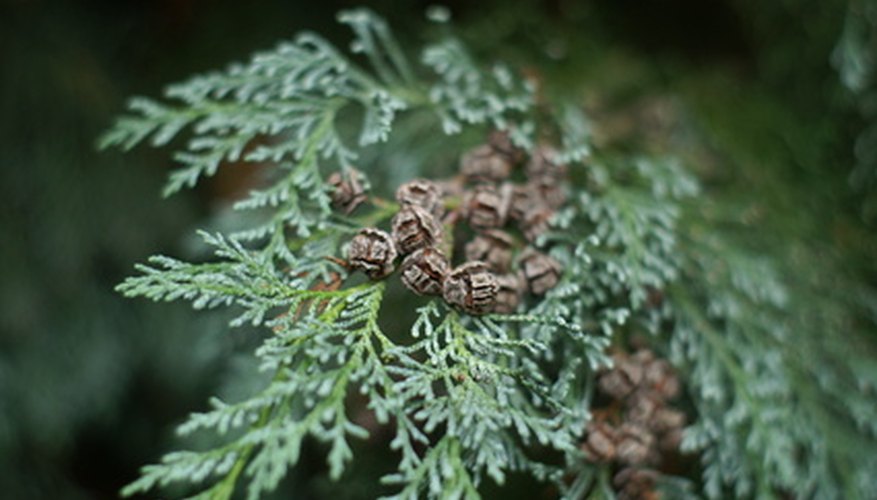The Thuja occidentalis tree is a type of cypress that is grown in the northern parts of the United States and Canada. One problem that can face these trees is that of browning leaves. The cause could be several different things, and the treatment for each is different.
Winter Browning
One cause of browning on a Thuja occidentalis tree is completely natural. During the winter months, sometimes the leaves of the tree will yellow or brown naturally. The brown from this occurrence does not look reddish or dry brown. The leaves may appear slightly yellowed, with brown hints. However, when bent the leaves will spring back quickly and show signs of moisture. If the leaves do not return to green when winter is over, then a more serious problem is at hand.
- One cause of browning on a Thuja occidentalis tree is completely natural.
- However, when bent the leaves will spring back quickly and show signs of moisture.
Watering
One cause for brown leaves may be from too little watering. The drought tolerance on the tree is very low. Ideal soils include those that have good drainage, but also that remain moist for a good portion of the year. Thuja occidentalis trees have even been seen growing in swamps and swamp-like conditions. However, growth in these areas is stunted. Start watering on a regular basis, making sure the surrounding soil does not dry out. After a couple of weeks the tree should return to a brighter green. If it does not, then other problems may be occurring.
- One cause for brown leaves may be from too little watering.
Pests
Leaf miners are a type of moth that can infect the Thuja occidentalis tree. In the summer larvae are laid under the leaves and incubated through winter. During the winter the little moths eat the leaves of the tree from the inside. Damage is almost undetectable until the following spring, when the leaves do not return to green. The best way to control this is to check during the fall for larvae under leaves and remove. A type of weevil larvae can also cause leaves to brown. The larvae attack the roots of the tree, often killing it within a matter of weeks. Larvae are housed several inches under the soil near roots. If a weevil attack is suspected, contact a professional right away. Chemical pesticides can also be used.
- Leaf miners are a type of moth that can infect the Thuja occidentalis tree.
- The best way to control this is to check during the fall for larvae under leaves and remove.
Disease
A few tree diseases will also cause Thuja occidentalis leaves to brown. Cercospora leaf blight will cause browning of the leaves. This blight attacks lower leaves and slowly works its way to the top of the tree. Phomopsis blight also causes leaves to brown. Infection starts as small yellow or grey spots and progresses to reddish-brown leaves. These diseases can largely be prevented by keeping trees from damp, humid conditions. A fungicide can also be used.
- A few tree diseases will also cause Thuja occidentalis leaves to brown.
- These diseases can largely be prevented by keeping trees from damp, humid conditions.
